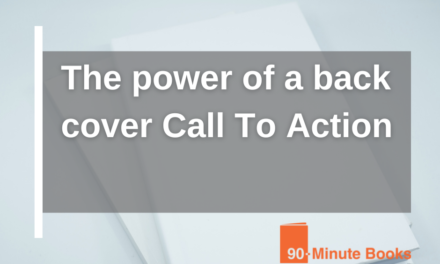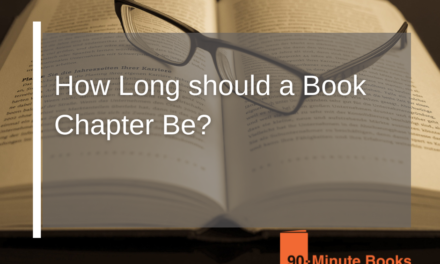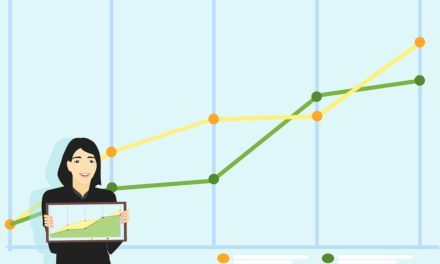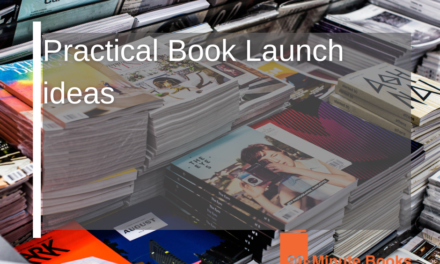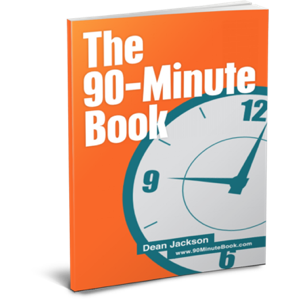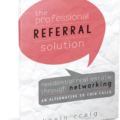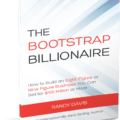The Kindle is Amazon’s e-reader that was introduced in 2007 and changed the publishing world. People no longer have to cram multiple paperbacks into their luggage when they go on vacation. Commuters can now bring a virtual library on the train daily. And people can start reading a book moments after they hear the author talking on the radio. Just as the Kindle changed how people consume books, Kindle Direct Publishing changed how people publish books.
It is a free service to publish and distribute e-books. Authors can earn up to a 70 percent commission for titles sold on the Kindle Store. launched in November 2007 as a way for authors and publishers to distribute e-books.
Authors can upload documents to the KDP website in several different formats. They can charge anywhere from $0.99 to $200.00 for their work. The documents can be written in up to 44 different languages.
In 2016, Amazon added an option for self-publishers to print paperbacks using print-on-demand technology. Amazon has been promoting the capability of publishing e-books and paperbacks through the same platform to its authors.
In this post, we’ll look at some of the basics of Kindle Direct Publishing and why it’s become such a popular publishing platform for independent authors who write in English.

FREE BOOK
Discover the 5 Compelling Book Titles Types that create an ‘I Want That…’ response.
The Essential Guide to Amazon KDP
History
Jeff Bezos, the CEO of Amazon, revealed in a 2009 interview with the New York Times that Amazon keeps 65% of the revenue from all e-book sales made on the Kindle. The remaining 35% is split between the author and the publisher. Since many people have noted that Apple’s App Store offers a 70% split of royalties to publishers, Amazon has created a program that offers the same split to Kindle publishers who agree to certain conditions.
Amazon has an e-book publishing option called KDP Select that requires 100 percent exclusivity. This means that e-books published under this option cannot be sold anywhere else until enrollment in KDP Select expires.
While under KDP Select, an author can offer the book free for five days or discount it for up to seven days through a countdown deal while still earning 70% royalties. The author can opt out from KDP select ninety days after enrollment. If no action is taken, it will auto-renew the book for another ninety days.
Outside of limited deals, e-books that are permanently priced below $2.99 only get 35% royalties. All KDP Select books are included in Kindle Unlimited, a monthly subscription that allows unlimited reading of e-books.
Kindle Scout
In 2014, Amazon released the Kindle Scout platform, allowing readers to nominate e-books to be published by Kindle Press. As of November 2016, 197 books have been published through this program.
Readers who would like to see a certain work published can nominate it by finding its excerpt and reading up to 5,000 words. They can nominate up to three works at any time and change their nominations as they please. After the nominated work’s 30-day campaign ends, Kindle Press editors will decide whether to give it a contract within fifteen days.
If the reader who nominated the work did so on the campaign’s final day, they are given a free copy of the e-book when it is published.
Authors can submit unpublished manuscripts of 50,000 words or more in science fiction, fantasy, mystery, or romance. Once a book is accepted for a campaign on Kindle Scout, the author promotes their book for 30 days to try and get as many nominations as possible.
The more nominations a book has, the more likely it is to be selected, although this is not guaranteed. The author is paid a $1,500 advance and 50% royalties if the book is selected. Once the book has earned the advance, Amazon pays the author royalties monthly.
Save for print rights, Amazon takes all other rights to Kindle Press e-books. If an e-book fails to make $25,000 within five years, its author may request that its rights be reinstated. Kindle Press e-books are subject to active promotion by Amazon.
In April 2018, Amazon announced that it would be shutting down Kindle Scout, a service that allowed authors to submit their work to be considered for publication. 293 titles had been selected for publication through the program.
Kindle Publishing for Blogs
Since early 2008, Kindle users have been able to access blogs published by popular media outlets like Ars Technica and TechCrunch. In May 2009, the program was opened to all bloggers, and as of December 2015, the service is still in beta.
Amazon sets the monthly subscription rate for each blog at $0.99 – $1.99. 70% of the revenue from blog sales goes to Amazon, and the remaining 30% is split between the publisher and author.
Amazon announced that they were discontinuing support for blogs on Kindle via email. This discontinuation is due to low usage as of August 19, 2019. They have renamed the service Kindle Publishing for Periodicals.
Kindle Worlds
Amazon shut down Kindle Worlds in August 2018.
Amazon has reported that the Kindle version of Fifty Shades of Grey sold more than double the book’s print sales. In June 2012, the Kindle edition became the first ebook to sell more than one million copies on Amazon.
Amazon used to pay authors in its KDP Select program a set amount per book as long as the reader read at least 10 percent of it. However, this method received a lot of criticism from authors of longer books.
This is because they would only get paid if the reader read a larger portion of their book, unlike authors of shorter books who would more easily receive payment.
In July 2015, the company switched to a per-page model where the author would earn a share of a monthly fund based on how many pages were read. The fund was $1.2 million in April 2014, $11 million in July 2015, and is currently $28.5 million. This works out to a per-page rate of about half a cent.
During 2016, Amazon released four million e-books, and 40% of those titles were self-published under KDP.
In April 2017, Amazon released Kindle Create, an application for converting Word and PDF files into Kindle-compatible files. Before this release, there were multiple Amazon apps to convert various types of files.
This is an increase of over $40 million from 2018 to 2019.
What are the benefits of KDP Publishing?
- Amazon is the largest bookstore in the English-speaking world
In other words, it’s the biggest bookstore in the world, full stop – although Amazon doesn’t have quite the same level of control over non-English language book markets. In the US, Amazon held 83% of the market share for ebooks in 2019, with the other 17% divided between its competitors.
Even though indie authors manage their titles across multiple retailers, most of their sales come from the Kindle store.
- The Kindle Store is algorithm-driven, which is good news for indie authors
Amazon’s bookstores don’t have a team dedicated to choosing which titles to promote. Instead, they let their algorithm make those decisions. This contrasts with other online retailers like Apple Books and Kobo, who have human teams that make choices about which books to feature.
Why is this good news? The algorithm won’t just promote famous authors and big new releases; it will also promote lesser-known authors and books!
The algorithm used by Barnes & Noble is compared to The Terminator’s ruthlessness and lack of favoritism towards big-name authors. The algorithm looks at data to decide which books to promote, giving indie authors an equal opportunity as long as they can generate sales and reviews. Although this may sound difficult, it is easier than convincing every bookseller in the country to stock your book.
- You can sell ebooks and print books from a single account.
KDP Print is a service from Kindle Direct Publishing that manages print-on-demand. Authors must upload print files that are immaculately formatted (different from the ebook format). Once done, they can start selling physical copies from their existing KDP account once they do. In short, authors can stay within the Kindle ecosystem to minimize their time spent on administration.
- You have access to some pretty cool marketing tools
When you self-publish a book, you need to do more than just make it live. Amazon offers a range of marketing tools to help authors reach their target audience on the Kindle store.
One of these is Amazon advertising, which allows authors to feature their books as ‘sponsored products’ on the pages of other, similar titles.
Amazon’s Kindle Countdown Deals and free Kindle books through the Kindle Unlimited program. Aside from paid ads, Kindle Direct Publishing has free marketing options with its KDP Select program.
For more information, you can read our in-depth look at KDP Select, but in short, it provides access to Amazon’s Kindle Countdown Deals and free Kindle books through the Kindle Unlimited program.
that gives you access to a large library of e-books – free for the next two months. If you sign up for Kindle Unlimited from Amazon, you will have free access to a large library of e-books for the next two months.
You can increase the number of downloads for your book by making it free for 5 out of every 90 days.
You can choose the new price for your book and how long you want the promotion to last. If your book is enrolled in KDP Select, you can use Countdown Deals as one of your two book price promotions per year. Run a week-long Kindle price drop that will see your book promoted in the Kindle store’s Countdown Deals section.
You can choose the new price for your book and how long you want the promotion to last. If your book is enrolled in KDP Select, you can use Countdown Deals as one of your two book price promotions per year.
Although there are some drawbacks to using KDP Select, which we will discuss in the next section, overall, it is a positive experience.
What are the drawbacks of KDP Publishing?
There are a few drawbacks to Kindle Direct Publishing which have caused many authors to not rely solely on Amazon.
- There are limits to KDP’s 70% royalty rate.
Self-publishing offers authors a much higher royalty rate than traditional publishing. With self-publishing, authors can expect to receive around 70% of the cover price for each book sold. However, on Amazon, there are limitations to that.
If you price your book above $9.99 on Kindle, you will only earn 35% royalties. Most authors are not affected by this (if your ebook costs more than $10, you might be doing something wrong), but if you’re selling a box set of multiple books, you will be penalized. In contrast, Apple Books and Kobo have no such price ceiling.
- To access KDP Select, you can’t sell your ebook anywhere else
If you want to use the marketing tools mentioned in the last section, you must sell your ebook exclusively through Amazon.
Books are commonly sold on Amazon, but Kindle does not have a large market share in some countries. If an author wants to reach the largest audience possible, then being tied to Amazon for a period of time might not be the best option.
- You might be hastening the Bezospocalyse.
A monopoly is when a single company or entity controls most of a market. Monopolies are not good for consumers because they give that company too much power. If you buy from a small business, you may have to wait a long time for your product.
Although you may be worried that selling on Amazon through the Kindle store will result in an inevitable monopoly, you could argue that there is no other way for authors to make a living. Selling through Amazon may be a compromise you have to make to make a profit. Remember that Amazon has created a platform that has changed publishing by taking power away from the gatekeepers and giving it to the creatives.
Some people might not care about Amazon’s unethical practices, but every author should consider it.
Guest Post Disclaimer
The views expressed in this post do not represent the views of 90-Minute Books. The information has not been verified and should be considered an opinion. You are always advised to do independent research.


